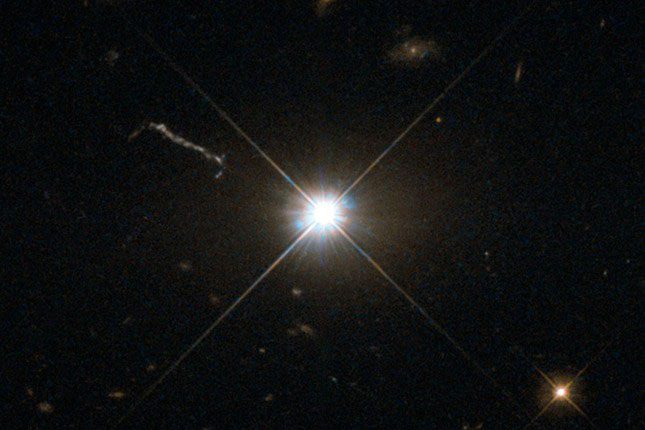A distant galaxy with a black hole at its center has emitted radiation. This is the ancient and brilliant quasar 3C 273, located in a massive elliptical galaxy in the Virgo constellation.

With modern technology, new-generation telescopes have captured images of objects in distant galaxies.
Researchers at the ALMA Observatory have developed techniques to study the host galaxy’s dark matter. They discovered that the structure of radio waves is layered across the galaxy spanning tens of thousands of light-years – a first-of-its-kind discovery.
According to Phys.org: “When you see the headlights of a car, the bright light makes it hard to see the darker surroundings. The same happens with telescopes when observing bright objects.”
“By applying similar techniques to other quasars, we hope to understand how a galaxy evolves through its interactions with its central nucleus,” stated a leading researcher of the study.
The James Webb Space Telescope, launched in 2021, has recently settled into its position in space and is expected to send back colorized images of the cosmos to researchers in July of this year.





















































